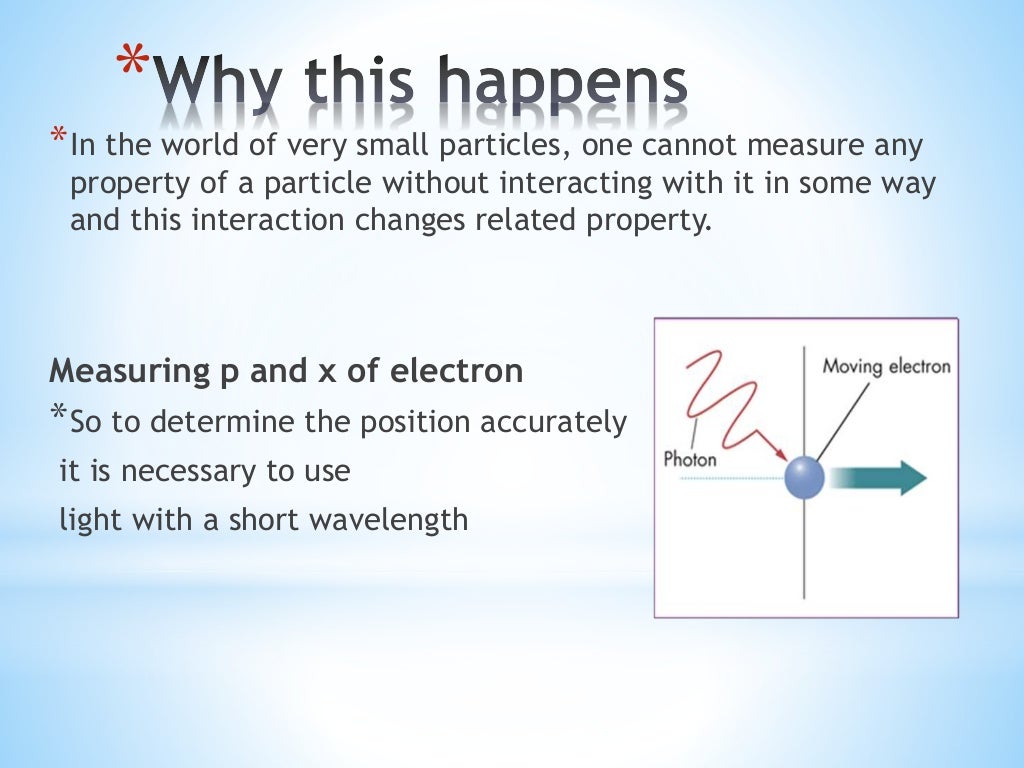

Heisenberg principle for dummies free#
The infinity in this equation is what excites the free lunch crowd (the modern descendants of the perpetual motion crowd), who envision an endless ZPE for humanity to tap into. (Electromagnetic vacuum energy) = sum over all modes (1/2) hbar omega(mode) The bad news is that there is an infinite number of modes. The good news is that the potential for electromagnetism is exactly quadratic and so can be solved exactly. Quantum effects mean that this case does not hold true there is also a Heisenberg uncertainty principle for electric and magnetic fields (it's a little more complex). Again, the classical ground state is the case in which the electric and magnetic fields both must be zero. The next step is to realize that the electromagnetic field can be thought of as an infinite collection of coupled oscillators-one at each point in space. The ZPE in this sense shows up almost everywhere: it affects molecular bonds, condensed matter physics, small oscillations of any system. Where hbar is Planck's constant times and omega 0 is the natural oscillation frequency. Quantum mechanically, it is now an undergraduate exercise to use the Heisenberg uncertainty relation (more precisely, Schroedinger's differential equation) to show that Particle would have if we were to give it a small push. The ZPE is defined as this shift:Į(ZPE) = E(quantum minimum) - E(classical minimum) > 0Ĭlassically, we can calculate the natural oscillation frequency that the Quantum physics, via the Uncertainty Principle, forces the particle to spread out both in position and velocity and so causes it to have an energy somewhat higher than the classical minimum. Because the classical ground state completely specifies both the particle's speed (zero) and position (at the minimum), it violates the famous Heisenberg Uncertainty Principle (m dv dx > hbar).

But this result is only a classical approximation to the real world. To find the classical ground state, set the velocity to zero to minimize the kinetic energy, (1/2)m v 2, and put the particle at the point where it has the lowest potential energy V(x). In classical physics, if you have a particle that is acted on by some conservative force, the total energy is E = (1/2) mv 2 + V(x). Sometimes we can even measure these changes in the vacuum energy in laboratory experiments.


These changes in the vacuum energy are often easier to calculate than the total vacuum energy itself. Any objects that change the vacuum energy (electrical conductors, dielectrics and gravitational fields, for instance) distort the quantum mechanical vacuum state. It definitely is possible to manipulate the vacuum energy. Many theorists suspect that the total vacuum energy is exactly zero. Observation indicates that in our universe the grand total vacuum energy is extremely small and quite possibly exactly zero. In a completely empty flat universe, calculations of the vacuum energy yield infinite values of both positive and negative sign-something that obviously does not correspond to the nature of the real world. The "vacuum energy" is a specific example of ZPE which has generated considerable doubt and confusion. The ZPE has been studied, both theoretically and experimentally, since the discovery of quantum mechanics in the 1920s and there can be no doubt that the ZPE is a real physical effect. The Zero Point Energy (ZPE) is an intrinsic and unavoidable part of quantum physics. Matt Visser of Washington University in St. The earlier replies to this question established the implausibility of drawing on the zero point energy for practical use.


 0 kommentar(er)
0 kommentar(er)
